By Team Rotordrone Photos John Reid and Tony Donaldson
In their own words, Wild Rabbit Productions is a “small team working their asses off to make it” in the burgeoning industry of aerial videography. When now-partner Drew Roberts needed some “mind-bending” shots for a project he was working on two years ago, he realized that using a multirotor was the only way to pull them off. Having a background in radio control helped him bridge the gap (he raced RC cars when he was younger), and he joined with his friends Patrick Ecclesine and Katee Laine to create Wild Rabbit and pursue aerial cinematography.
We were excited to meet up with the Wild Rabbit team as they captured aerial video of pro surfer Eric Geiselman at the San Clemente beach in SoCal and were able to get the scoop on what they do and their tips for successful multirotor footage.
Above: A passing surfer wonders about that thing that Drew is working on
RotorDrone: Capturing surfing video must pose some difficult challenges; how do you deal with them?
Wild Rabbit Productions: Surfing is one of the most difficult sports to capture with the drone, not only is the salt water and sand harsh of the equipment; shooting over water can be very nerve racking carrying over $50,000 in camera and gear. In an instant it can be all lost, but the footage usually captured makes it all worth it. Surfing is hypnotizing and beautiful to watch, and usually has only been able to be captured from the shore, in the surf line in the water, or from a boat; all angles which are taken from a low perspective. UAV technology just changed everything on how surfing can be filmed. As challenging as it is, it’s a great experience for us and always a great feeling capturing a shot that has never been done or seen before. We built our drones specifically to film surfing and any action sports that require fast speeds and overall flight times. Although the waves were really flat today, Eric Geiselman still pulled out a few tricks for us. That’s also another reason why we love shooting surfing; its a very humbling culture.
Tell us more about your business and what you do.
Wild Rabbit specializes in commercial and entertainment productions. This is kind of a tough question seeing that this is such a new technology for this industry. It feels like every job we work on has its new set of challenges that we have to overcome. We see ourselves as collaborators and problem solvers, so every project that comes in we work very closely with our clients to give them exactly what they need and usually more than what they expected. Commercials are usually the most beneficial using our services in aerial cinematography. We are able to add a very large production value to their projects in a relatively short amount of time. However, as a team, we personally excel working in action sports and automotive commercials. That’s where we’re most passionate, have the most fun, and usually the most creative freedom.
Are your flights always completely pre-planned or do you improvise while you’re in the air?
We have done both improvised and pre-planned flights, but we do prefer pre-planned flights and camera movements. When we pre-plan a flight path, camera, and subject movement, we are taking full advantage of the amazing capabilities of the aerial cinematography rigs we fly in the space we’re in. There is no better feeling than knowing that we executed a complex shot flawlessly.
Above: The team! Drew Roberts (lead pilot), Eric Geiselman (pro surfer), Nathan Labruzza (drone technician, pilot) and Katee Laine (producer and camera operator).
What equipment do you use?
Over the past two years we have flown many of the popular multirotor platforms but recently we began working with a local engineer and drone manufacturer to design and build our new heavy-lift X8 multirotor. Our main focus for this new drone was portability and minimizing points of failure, which we can proudly say we have achieved both and could not be happier. The brains behind our new heavy-lifter is the trusted DJI Wookong Flight controller and we are also running the Hercules II XL 8in1 speed control, KDE Direct motors, 18-inch T-Motor Carbon Fiber Props, and two 10,000mAh 6S LiPos. With this setup we are able to lift RED and Sony cameras with prime lens on a Freefly Systems MoVi M10 gimbal for over 12 minutes. Switching over to the coaxial (X8) design of this new rig was a challenge for us, but has been one that has paid off immensely in the end. We are now pushing shots further creatively and technically with the confidence of a trusted rock solid rig.
We also have a purpose-built hexacopter designed for shooting action sports and anything that requires a little more speed in a rougher environment. This rig is FAST and has been giving us over 20 minutes of flight time carrying a small Micro Four Thirds camera such as the Panasonic GH4 on the Freefly Movi M5 gimbal.
All of which of course, couldn’t be possible without the Paralinx Tomahawk and Array Antenna for the long range HD video downlink to serve the camera operator and director during the shoot or live broadcast, like we did for the Cincinnati Reds opening game.
Above: The drone in action above Eric as he catches another wave.
How long are your flying times when shooting on location?
While we have flight times anywhere between 12-20 minutes depending on the payload, we try to limit our flight times on set to 3 minutes or less when shooting for films or commercials. Precision and repeatability are crucial when on set so we like to execute a take, land the drone, run playback and discuss what can be done differently to improve the shot. That being said, we rarely have the luxury to land after every take to preview the shot and make adjustments, this is where pilot/camera-operator communications become most crucial. While returning the drone to its starting position, our camera operator (Katee) will let me know what adjustments need to be made including velocity, altitude and flight path.
Above: The Wild Rabbit team travels to the job in this custom-made van, loaded with everything they need for the shoot.
What’s the most exciting project you’ve worked on?
All projects are pretty exciting to us, any time we get to work with new clients and create new collaborative shots with the multirotor is awesome. On the other hand, a few that come to mind would definitely be shooting for Nike. They closed off the 4th Street bridge in downtown Los Angeles to promote their #riskeverything campaign. They brought out all the tricks for this shoot, projecting a live animated and interactive soccer field onto the middle of the bridge while local and professional players matched each other. Another was filming for FOX Sports in Cincinnati for the opening day Reds game. That was epic: the first time in history to broadcast the event and game live from our multirotor straight to the viewers at home. We worked around the clock for that job, prepared and overprepared, couldn’t have been more rewarding accomplishing a large production such as that.
Any tips you can share with future multirotor pilots?
Communicate, communicate, and communicate! Can’t stress the importance of that; always discuss the safety with the entire cast and crew before filming and flying. If applicable, always check your systems before and after flights and designate a takeoff and landing zone so everyone on set is aware and out of harm’s way. Always have direct communication with the director or whoever is calling the shots, have the shots and a flight path already predetermined and planned with your camera operator so everyone is in complete synchronization before flying. Lastly, have fun and go with your gut, it’s always great to push the boundaries to get the epic never before seen shot and you’ll meet people who will push you to do so but ultimately you are in control and judge whether a shot can be deemed unsafe or reckless, and endangering someone’s life is not worth the shot or consequences.


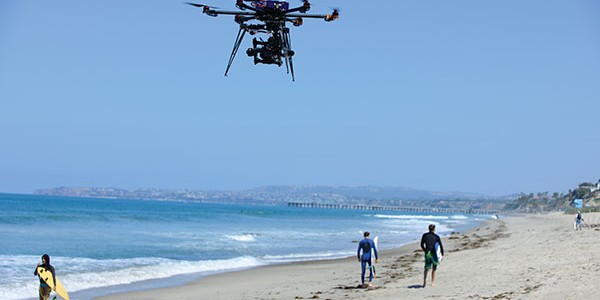
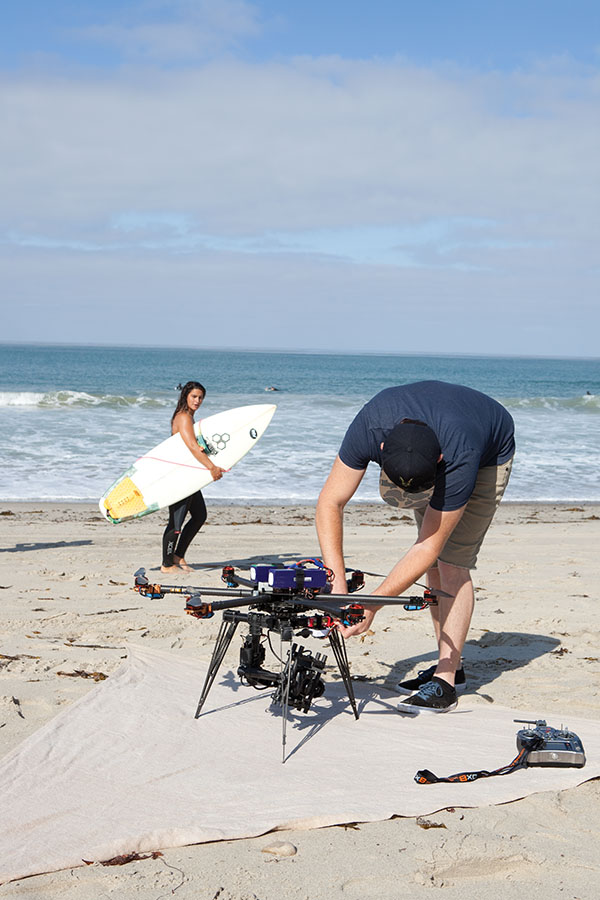
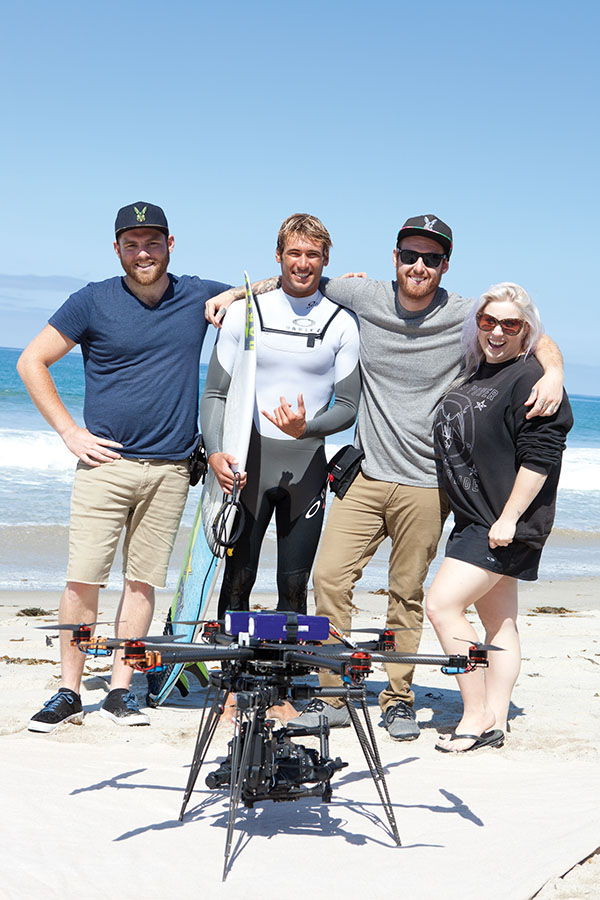
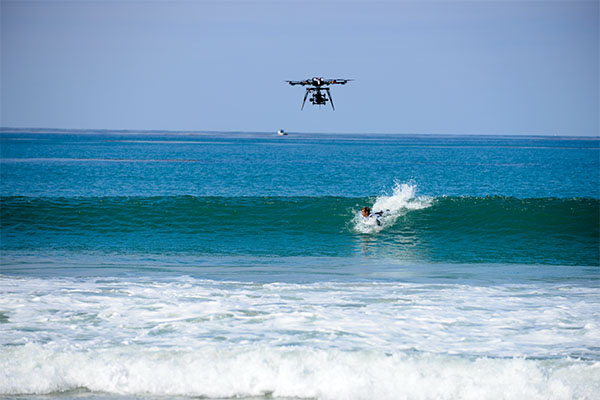
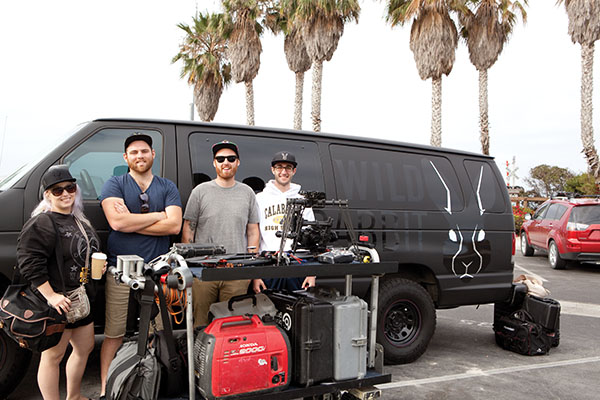

















I was wondering what you are doing about the salt spray. I am in Central FL and just got a phantom 2 with a GoPro 3 and Zenmuse H3-3D Gimbal to start off with. I have surfed most of my life and have been flying RC for about 10 years. I want to focus on the beach life. Just wondering if you are prepping the electronics with anything or just using a lot of compressed air after the flights to clean up with. Would be nice to see some of your beach work
Thanks
Brad